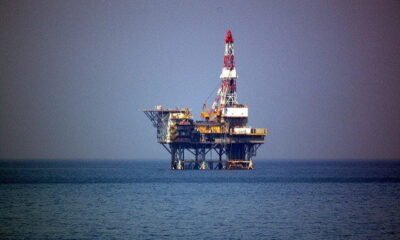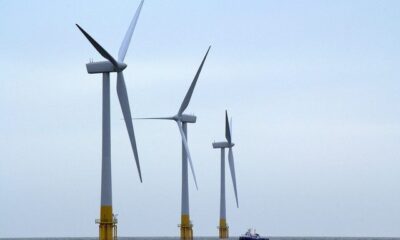

Economy
Study Of CO2 Flow Via North Sea Geology Will Develop Tools For Storage Sites
Scientists at the University of Strathclyde have secured funding for a four-year project which will enable them to study the ability of complex rock strata below the North Sea which will securely trap carbon dioxide emissions (CO2).
Their findings will help to provide the tools for selecting the most suitable CO2 storage sites as part of the large-scale development of carbon capture and storage, a key climate change technology. These tools could also greatly expand the potential for CO2 storage worldwide.
The study will look at how CO2, when injected into rocks deep below ground, could migrate upwards through the overlying strata, or overburden. The greenhouse gas can become trapped by dissolving into water-filled spaces between the rock grains. In more complex geology, where the fluids flow through complex pathways, there may be more potential for trapping CO2 as it rises, thereby minimising the risk of it escaping to the surface.
However, fault zones cutting geological layers could potentially provide shortcuts past the layers where CO2 could be trapped. The project team will investigate how the faults and rock strata interact to change the pathways for CO2 flow through the overburden.
The researchers from Strathclyde, an SCCS partner institute, will work with fellow scientists from the Universities of Cambridge and Imperial, and the British Geological Survey as part of a larger research project funded by Natural Environment Research Council (NERC).
Professor Zoe Shipton, University of Strathclyde, who will lead the fault zone study, said: “The rock types found within fault zones will change depending on the rocks that they cut. By understanding how the fault rock types influence mechanisms such as capillary trapping, dissolution of CO2 in water and migration pathways, our work can guide strategies for quantifying and reducing the risks of CO2 leakage from geological storage sites.”
We will construct simplified models of flow along layered strata with cross-cutting faults, alongside our partners’ laboratory analogue experiments, in order to constrain the effect of geological complexity on the fate of CO2 leaking from a subsurface storage site.
The researchers will also look at real-life examples of CO2 storage – for example, Norway’s Sleipner project in the North Sea – to test their findings.
The UK is geologically well placed to implement offshore CO2 storage, with many potential reservoirs in the geology beneath the UK’s North Sea.


 Environment10 months ago
Environment10 months agoAre Polymer Banknotes: an Eco-Friendly Trend or a Groundswell?

 Environment11 months ago
Environment11 months agoEco-Friendly Home Improvements: Top 7 Upgrades for 2025

 Features8 months ago
Features8 months agoEco-Friendly Cryptocurrencies: Sustainable Investment Choices

 Features10 months ago
Features10 months agoEco-Friendly Crypto Traders Must Find the Right Exchange





























